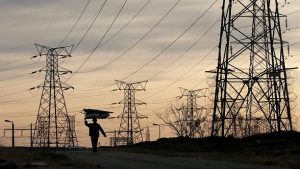Power utility Eskom has sought to allay fears of the country slipping into stage 16 of load shedding. This after the National Energy Regulator of South Africa (NERSA) approved guidelines for implementing load shedding up to stage 16.
The newly released guidelines will allow Eskom to implement drastic load shedding beyond stage 8. But Eskom says the system has been gradually improving, with no drastic stages of load shedding on the cards.
Stage 6 is still the highest stage of load shedding implemented to date. But Eskom continues to battle an energy crisis, which NERSA says makes it necessary to make provision for any eventuality.
Stage 16 of load shedding will see 80% of power cuts implemented, with the switch-off time seeing consumers going up to 20 hours a day without electricity.
“Addition 3 which is the current code of practice which NERSA has recently approved caters for up to level 16 or stage 16 of load shedding. This by no means says we are expecting or there is an imminent stage 16 but it’s simply a way of preparing the system operator in an eventuality that would require him to be able to operate they system under such conditions. Of course, you may be aware that the Eskom generation performance has not improved over the years so what one wants to do at this point in time, is to prepare for any eventuality but by no means say we are anticipating stage 16 anytime soon,” says HOD of Licensing and Compliance, at NERSA, Welile Mkhize,
The new guidelines allow Eskom and municipalities to mitigate the impact of higher load shedding stages and prevent grid collapse. It also empowers Eskom and electricity distributors powers to take emergency action if necessary.
Eskom says there’s no need to worry as the grid has stabilized over time, pouring cold water to concerns of looming heightened levels of load shedding to stage 16.
“We are now on day 12 without any load shedding, we’ve seen in December, we actually spent 19 days without load shedding. We’ve seen from January up until now April that we had less stages of load shedding if you may and this shows you that our plans which is the generation recovery or operational recovery plan is indeed yielding the desired results. So, this particular reversion of NRS 048 is just to make sure that in case we have to move to a higher stage, our system operator is basically prepared for that however it doesn’t mean that we are going to implement it,” says Eskom spokesperson Daphne Mokoena.
Energy experts have warned that heightened levels of load shedding will be disastrous for the country and its ailing economy. They, however, believe the new protocols will help prepare the ground in cases of an emergency.
“Load shedding is a major determining factor in the stagnant growth in our economy, we also know that with the implementation of load shedding. Most businesses that could afford went for alternative sources of energy; we’ve seen the rise in the installation of rooftop solar for instance. At that particular end, those businesses will continue to run but whatever additional costs of energy if they have to run a diesel generator, big battery facilities, they will then pass on that cost to the consumers meaning the consumers will not be able to afford some of the basic goods and services,” says energy expert at Sanedi, Prof Sampson Mamphweli.
The country is edging closer to winter, with energy demand expected to increase.
Eskom says it’s up to the task as per the Energy Action Plan, with a winter energy outlook expected to be released in the coming month.





